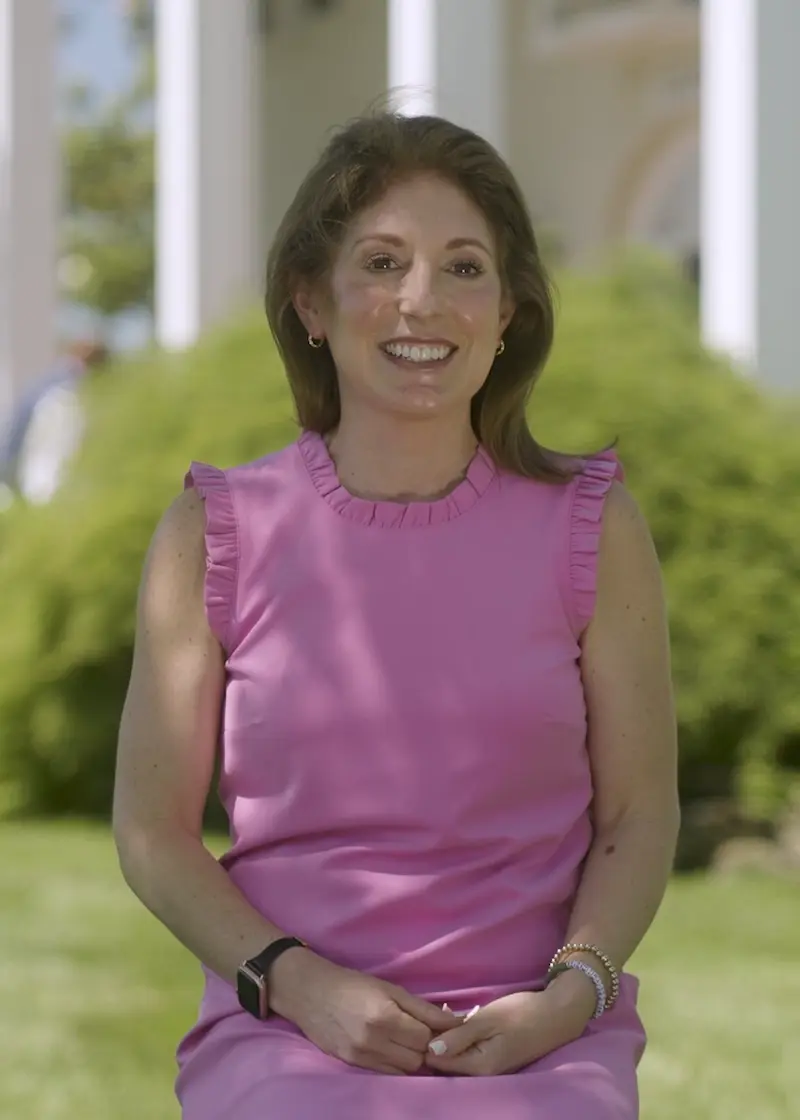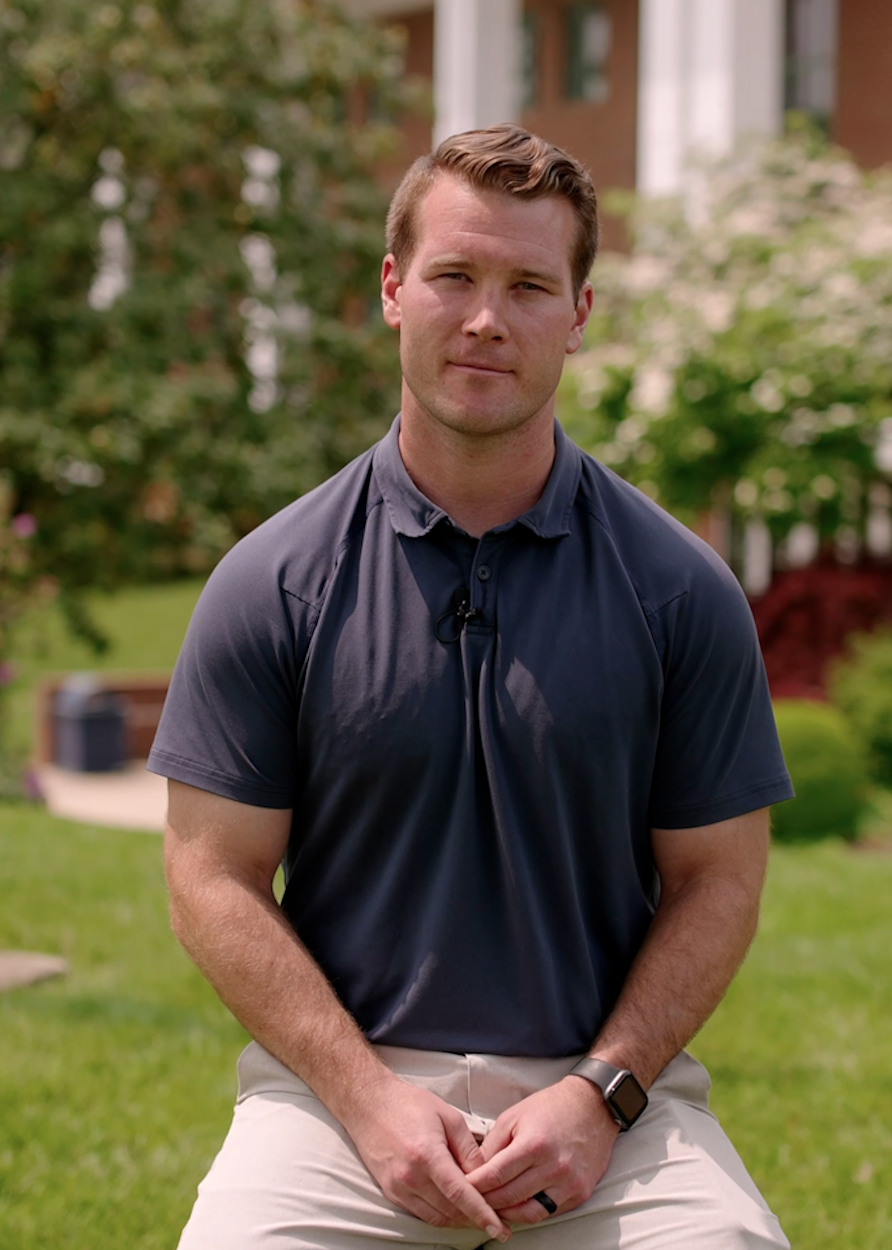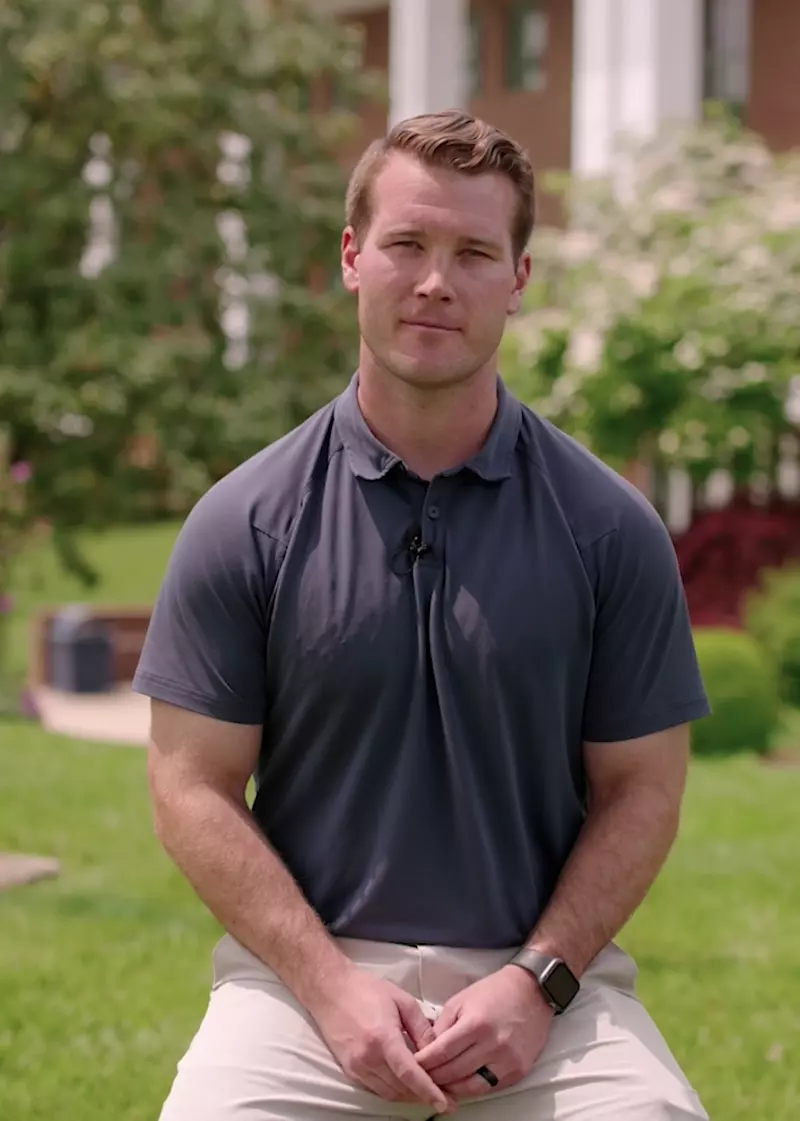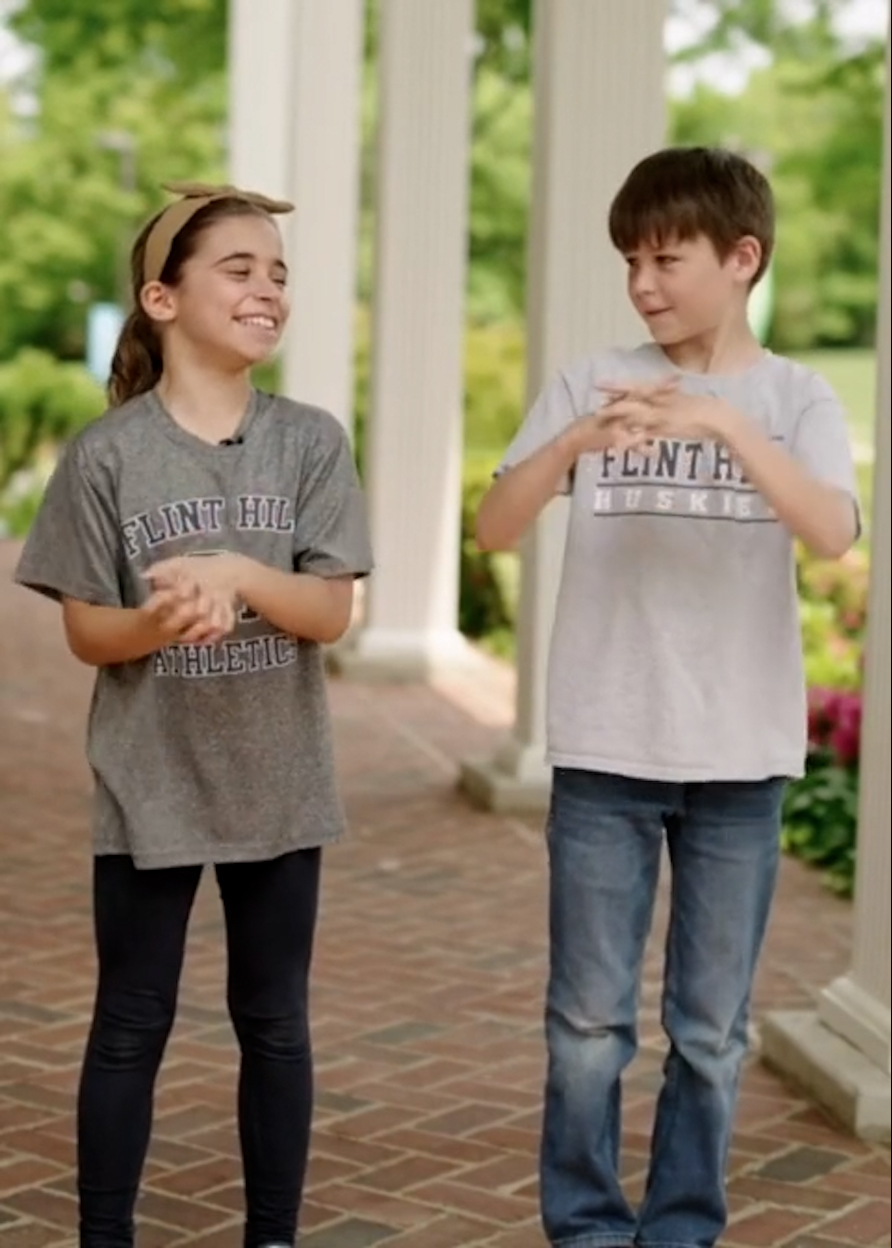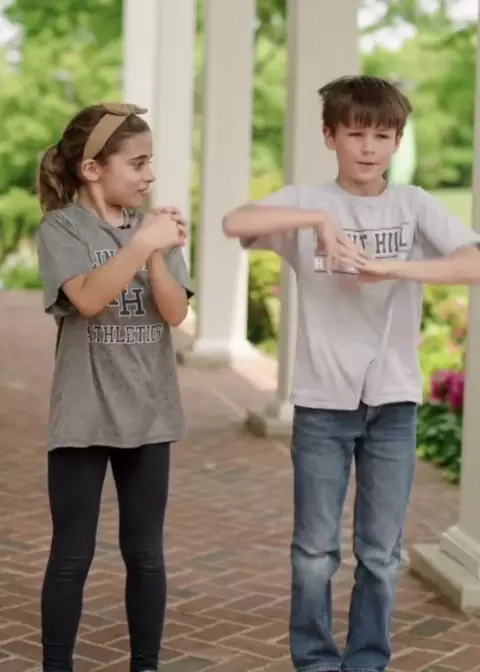Lower School
By establishing a framework for learning in the earliest years, students are better equipped to succeed in school and in life.
Our Lower School (grades JK-6) recognizes and celebrates that each student is unique and learns differently. With small classes and attention to every student, we are able to individualize learning and teach to each child’s strengths. Students are given the space to extend and challenge themselves in meaningful ways and become confident self-advocates for their own learning.
At Flint Hill, children are nurtured to be their very best, surrounded by people who know and care about them. Our Lower School sets new standards for excellence by relentlessly innovating our approach to learning. We ensure children develop in a positive environment and learn essential social and academic skills.
Why Start at Flint Hill Early?
The earliest years are when our teachers build the foundation for students to think like scientists and explorers. Flint Hill students are inspired to approach learning in a way that is already natural to them — with curiosity. Our teachers are their guides, prepared to help children discover the right tools and strategies for them to be thinkers and problem solvers. This approach builds confidence, a passion for learning, and the foundation to solve problems throughout their lives.
Our low student-to-teacher ratio (grades JK-1 have two teachers per classroom, and the general Lower School ratio is 7:1) allows for more individualized instruction and more meaningful connections between teachers, students, and classmates. The adults on campus know every student in the school. Research tells us that these relationships facilitate deeper learning.
Because our school runs through 12th grade, you’ll never have to go through the application process again. And by securing a spot in our earliest entry year, you’ll avoid the wait pools that occur in most of our later grades.
5th Grade Expansion: Lower School Leaders
At 5th grade, we add a third class, expanding to welcome a new set of students. As the leaders of the Lower School, our 5th and 6th graders enjoy increased independence, choice, and space as they prepare for Middle School. They switch classes for math and their choice of music class while also participating in art and innovation. Their days include productive challenges in the classroom and active, unstructured play outdoors.
Our 6th graders use their leadership skills to plan and present our weekly Lower School Morning Meetings and create content with lower grades for cultural celebrations. Their schedules include flex time blocks for projects, study skills, and executive functioning practice with a learning specialist.
SEE OUR PROGRAM IN ACTION
MORE PROGRAM HIGHLIGHTS
Lower School teachers make it a a point to learn directly from the students what their individual hopes and dreams are for the school year. They also take the time to invite their parents' perspective. Just before the start of each new school year, Flint Hill hosts a series of conferences for Lower School parents to drop by the classroom to share their hopes, dreams, and goals for their child’s upcoming year, along with any additional information they believe would be helpful for our teachers to know about their child.
Tuesday mornings begin with a Morning Meeting for the entire Lower School to gather in the Olson Theater for a student-driven exhibition of learning that cycles hosting duties throughout each homeroom. Students and teachers are encouraged to share about meaningful holidays and celebrations to foster inclusivity. The core values are highlighted and demonstrated through students sharing their personal and academic passions with the student body.
Every other day of the week, students start their day with morning meeting in their classrooms as part of the Responsive Classroom curriculum.
Several times a year, students have the opportunity to welcome their parents into the classroom to hear about their learning, see projects they have been working on, and experience the classroom community and environment firsthand. Following the classroom visit, parents join the Director of the Lower School for a coffee and Q&A on a particular topic of interest.
Part of the annual Global Day of Play, our Day of Play curriculum introduces students to design skills used by engineers, architects, and other professionals. Teachers are the facilitators as students brainstorm, plan, build, test, and improve their creations. Additionally, students have opportunities to learn about giving and receiving constructive criticism during feedback sessions. Lower Schoolers ultimately build upon the foundation created by Day of Play activities through our Middle School Maker Education program and Robotics and Design Thinking courses in the Upper School. Past Day of Play themes have included "Huskies Go Jurassic" and "Camp Curiosity".
As a a Lower School that spans junior kindergarten through grade 6, we maximize opportunities for students across the grade levels to learn from each other. Youngest Huskies in junior kindergarten through 1st grade are paired up with older students in 4th and 5th grade to serve as mentors and “buddies” for the younger children. The buddies meet regularly to collaborate on service learning projects, play games, and attend school events together. The connections they make follow them into Middle and Upper School.
Each spring, Lower School students host a Student-Involved/Student-Led Conference with their families and teacher(s). The objective of this conference is to celebrate each child’s competencies and to allow them to articulate the progress they’ve made during the year. The focal point is a portfolio developed by each child that shows a wide range of assignments along with important reflections of their work and their learning. As they review their work, the children consider reasonable goals for themselves for the final quarter of the year, which is shared during the conferences.
LOWER SCHOOL LEARNING JOURNEY
Life in the Lower School is about laying the foundation for a lifetime of curiosity and joyful learning. In addition to substantive projects and academic work, our students’ capacity for curiosity, discovery and in-depth exploration is celebrated through engaging activities that stimulate and instruct them in age-appropriate ways.
CURRICULUM
Lower School teachers are equipped with a strong understanding of the neuroscience of learning and experience with strategies that foster deep learning in the classroom. Flint Hill students don’t say, “I don’t know,” if they don’t immediately know the answer to a problem. They dissect the information they’ve been given and pull out tools to find their way to the solution. Our students are comfortable with the productive struggle and expand their capacity for learning in the process.
ART
K |
KINDERGARTEN
Students are introduced to a variety of media, including drawing, painting, collage, printmaking, ceramics, and sculpture. Students draw upon their imaginations as well as observation skills to build visual literacy and expand their developing skills.
Objectives:
Develop creative thinking skills
Build imagination
Learn to express oneself visually
1 |
1st GRADE
Students are exposed to a variety of media in different art disciplines, including drawing, painting, printmaking, ceramics, and sculpture. Students learn basic color theory and are introduced to various drawing media.
Objectives:
Explore the concept of multiples in print
Learn basic color theory
Learn about the elements of art
2 |
2nd GRADE
Students expand on previous skills learned and are challenged with more involved projects in drawing, painting, collage, printmaking, ceramics, sculpture, and design. Students learn basic weaving and clay hand-building skills.
Objectives:
Expand on basic color theory
Develop knowledge of elements of art
Learn problem-solving skills in art
3 |
3rd GRADE
Students expand on previous skills learned for more in-depth projects in different art disciplines, including drawing, painting, printmaking, clay animation, ceramics, and sculpture. Students are challenged to combine art skills learned with personal points of view in their work.
Objectives:
Learn basic compositional design
Explore printing work in editions
Expand on hand-building clay techniques
4 |
4th GRADE
Students expand on previous skills learned with an emphasis on developing new ideas, expanding on known concepts, and integrating grade-level knowledge with the joy of self-expression. Students incorporate elements of art and principles of design in increased complexity and depth.
Objectives:
Build on artistic problem-solving skills
Develop technical and conceptual skills
Foster potential for more individual expression in art
5 |
5th GRADE
The 5th Grade Art course aims to foster creativity, develop artistic skills, and introduce students to various art forms and techniques. Through engaging projects and activities, students will explore different mediums and learn about the purpose of art in life and culture. The course encourages students to express themselves visually while enhancing their critical thinking and problem-solving abilities.
Objectives:
Foster creativity
Develop artistic skills
Apply the art elements and principles of design for visual impact
6
6th GRADE
The 6th Grade Art course with an emphasis on design aims to develop students' creativity, problem-solving skills, and understanding of the principles of design. Through engaging projects and activities, students explore concept development, composition, layout, elements, principles, and techniques. They learn to apply these concepts in various art forms and develop an appreciation for the role of art and design in culture and everyday life for visual impact.
Objectives:
Develop the creative process
Develop problem-solving skills
Apply the art elements and principles of design for visual impact
LANGUAGE ARTS
JK |
JUNIOR KINDERGARTEN
Junior Kindergarteners focus on early literacy skills with a strong emphasis on phonemic awareness, sound-symbol relationships, and concepts of print. Children combine letters, spaces, and pictures to communicate ideas, and they write using spelling approximations.
Objectives:
Concepts of print
Phonological/phonemic awareness
Letter knowledge
Listening comprehension
Writing process
Oral language - speaking/listening
Handwriting
Vocabulary
K |
KINDERGARTEN
Kindergarteners strengthen their phonemic awareness and start to decode language with corresponding sounds and letters. Play-based materials provide a launchpad for their reading and story writing, and they use their developing writing skills to record observations and share stories.
Objectives:
Concepts of print
Phonemic awareness
Phonics/decoding
Early reading comprehension
Writing process
Oral language - speaking/listening
Handwriting
Vocabulary
1 |
1st GRADE
First graders build on their foundation of reading accuracy while also strengthening their fluency and comprehension. Extended writing opportunities help them gain experience with the writing process. First-grade students begin the important work of developing research skills.
Objectives:
Phonics/decoding
Comprehension strategies
Genre-specific reading strategies
Writing process: pre-write, draft, revise, edit, publish
Oral language - speaking/listening
Research and inquiry
Grammar, usage, and mechanics
Handwriting
Vocabulary
2 |
2nd GRADE
Second-grade students study sound patterns while exploring more sophisticated texts. They explore setting, character, plot, and genre while also considering the author’s purpose. Students incorporate defining traits of various genres into their own compositions. They develop questions for inquiry that guide research and inform their nonfiction work.
Objectives:
Phonics/decoding
Comprehension strategies
Genre-specific reading and writing strategies
Writing process: pre-write, draft, revise, edit, publish
Oral language - speaking/listening
Research and inquiry
Grammar, usage, and mechanics
Handwriting
Vocabulary
3 |
3rd GRADE
Third-grade students learn to read as writers and write as readers. They explore more advanced comprehension strategies, and they write various genres, often with an authentic audience and clear purpose in mind. Students explore sound and spelling patterns while increasing their understanding of word meanings.
Objectives:
Phonics/decoding
Reading comprehension strategies
Genre-specific reading and writing strategies
Writing Process: pre-write, draft, revise, edit, publish
Research and inquiry
Oral language - speaking/listening
Grammar, usage, and mechanics
Handwriting
Vocabulary
4 |
4th GRADE
Fourth graders engage with independent, small group, and partner reading selections. They expand vocabulary using words from various aspects of the curriculum, and they analyze spelling features through sound and word patterns. In their written compositions, students execute skills from whole-class lessons as well as individual writing goals.
Objectives:
Phonics/decoding
Reading comprehension strategies
Genre-specific reading and writing strategies
Writing process: pre-write, draft, revise, edit, publish
Research and inquiry
Oral language - speaking/listening
Grammar, usage, and mechanics
Vocabulary
5 |
5th GRADE
Fifth-grade students build language arts skills through wide independent reading, close reading of shared class texts, and activities to deepen analytical thinking. In addition to creative writing opportunities, students refine nonfiction writing, making claims and using clear evidence to support their ideas.
Objectives:
Reading comprehension strategies
Genre-specific reading and writing strategies
Writing process: pre-write, draft, revise, edit, publish
Research and inquiry
Oral language - speaking/listening
Grammar, usage, and mechanics
Vocabulary
6
6th GRADE
Students enhance their comprehension and thinking through wide independent reading, analysis of shared texts, and a range of nonfiction resources. They use various strategies to gather, synthesize, and communicate information, and they exercise sharing their thinking in diverse genres and formats.
Objectives:
Reading comprehension strategies
Writing process: pre-write, draft, revise, edit, publish
Research and inquiry
Oral language - speaking/listening
Grammar, usage, and mechanics
Vocabulary
INNOVATION & COMPUTER SCIENCE
JK |
JUNIOR KINDERGARTEN
Junior Kindergarten students experience computer science and innovation explicitly through direct instruction from specialists and organically through continued opportunities in their classroom. Students are exposed to foundational coding concepts such as sequencing, debugging, and pattern recognition and are introduced to coding apps and physical bots to begin designing and debugging algorithms.
K |
KINDERGARTEN
Students are exposed to foundational coding concepts such as commands, numerical loops with block parameters, conditional loops, and sequencing. Students use coding apps and physical bots to practice basic programming concepts by designing and debugging algorithms. Through engineering, tinkering, creating, and sharing, students engage in the self-directed learning process that is crucial to innovation.
1 |
1st GRADE
Students practice with foundational coding concepts such as sequencing, conditions, and repetition using loops. Students use coding apps and physical bots to practice the fundamentals of coding by designing and debugging algorithms. Through engineering, tinkering, creating, and sharing, students engage in the self-directed learning process that is crucial to innovation.
2 |
2nd GRADE
Students develop their understanding of essential coding concepts such as sequencing, loops, events, and conditional statements. Students use coding apps and physical bots to practice fundamental concepts of computational thinking by designing and debugging algorithms. Through engineering, tinkering, creating, and sharing, students engage in the self-directed learning process that is crucial to innovation.
3 |
3rd GRADE
Students deepen their understanding of essential coding concepts such as loops, loop nesting, decomposition, abstraction, functions, and variables. Students use coding apps and physical bots to develop creative problem-solving and computational-thinking skills by designing and debugging algorithms. Through engineering, tinkering, creating, and sharing, students engage in the self-directed learning process that is crucial to innovation.
4 |
4th GRADE
Students strengthen their understanding of essential coding concepts such as nested loops, functions, and conditionals. Students use coding apps and physical bots to promote creative problem-solving and computational-thinking skills by designing and debugging complex algorithms. Through engineering, tinkering, creating, and sharing, students engage in the self-directed learning process that is crucial to innovation.
5 |
5th GRADE
Students learn the basics of computer programming, engineering, making, and design thinking, which are the building blocks of future study in Innovation courses at Flint Hill. In addition, students learn to use the resources available to them to make connections with their personal, social, and academic realms, all while being ethical and responsible users and producers of information within a one-to-one environment.
6
6th GRADE
Students further their foundation in digital citizenship and innovation. As they engage in interdisciplinary problem-solving and short- and long-term projects of increasing complexity and depth, students develop skills in critical thinking, creativity, collaboration, research, and communication. Students are encouraged to tinker, experiment, and create, using the power of digital design and fabrication, electronics, physical computing, engineering, and creative coding.
MATH
JK |
JUNIOR KINDERGARTEN
Students engage in play-based learning, counting, numeral recognition, and calendar activities to develop foundational math skills. Emphasis is on counting larger groups, numeral order, numeral writing, pattern recognition, and understanding the significance of numbers in everyday life.
K |
KINDERGARTEN
Kindergarten math builds a strong counting foundation for understanding numbers. Students engage in activities to develop addition and subtraction skills, grouping quantities, problem-solving, length measurement, spatial sense, shapes, and data collection using graphs, tallies, and tables.
1 |
1st GRADE
In 1st grade, students are immersed in practical experiences to develop a deep understanding of number relationships and mathematical concepts. Through hands-on activities, problem-solving, and pattern analysis, students learn addition combinations, explore shapes, and develop critical thinking skills through data collection and interpretation.
2 |
2nd GRADE
Second grade focuses on hands-on activities to deepen students' understanding of key math concepts. They learn place value through models, enabling visualization of two-digit numbers and developing strategies for addition and subtraction. Students also learn fractions, data analysis, measurement, and shape properties.
3 |
3rd GRADE
In 3rd grade, students develop a comprehensive understanding of math, focusing on four-digit numbers and the four operations. They learn multiplication and division properties, problem-solving strategies, and fractions. Decimal fractions, line graphs, measurement, and shape attributes are also explored.
4 |
4th GRADE
In 4th grade, students develop skills across various math domains. They focus on addition, subtraction, multiplication, factors, and multiples. Problem-solving, place value, fractions, decimals, data interpretation, probability, and shape attributes are emphasized.
5 |
5th GRADE
In 5th grade, students review and deepen their computational skills while focusing on fluency and accuracy. They develop strategies for multiplication, division, fractions, and decimals. Additionally, they explore 2D shapes, volume, data analysis, probability, and functional relationships through hands-on activities and collaborative discussions.
6
6th GRADE
Sixth-grade students focus on problem-solving strategies, patterns, models, and equations. They develop estimation, benchmarking, and reasoning skills. The math curriculum covers fractions, decimals, ratios, percentages, geometry, data analysis, and an introduction to algebra with an emphasis on connections, real-world application, investigation, and discovery-based learning.
MUSIC
JK |
JUNIOR KINDERGARTEN
JK-4th grade musicians engage in an active music curriculum, embracing Orff Shulwerk and Kodaly approaches to reading rhythm and melody. They also learn about the people and cultural traditions that contextualize songs, games, rhymes, and dances in the music room. Experiences are designed to teach students life skills, such as teamwork, concentration, and mindfulness. They celebrate their learning through two collaborative concerts a year.
Music activities are organized in a logical progression from JK through 4th grade, using the following categories: rhythm, melody, harmony, form, and timbre.
K |
KINDERGARTEN
JK-4th grade musicians engage in an active music curriculum, embracing Orff Shulwerk and Kodaly approaches to reading rhythm and melody. They also learn about the people and cultural traditions that contextualize songs, games, rhymes, and dances in the music room. Experiences are designed to teach students life skills, such as teamwork, concentration, and mindfulness. They celebrate their learning through two collaborative concerts a year.
Music activities are organized in a logical progression from JK through 4th grade, using the following categories: rhythm, melody, harmony, form, and timbre.
1 |
1st GRADE
JK-4th grade musicians engage in an active music curriculum, embracing Orff Shulwerk and Kodaly approaches to reading rhythm and melody. They also learn about the people and cultural traditions that contextualize songs, games, rhymes, and dances in the music room. Experiences are designed to teach students life skills, such as teamwork, concentration, and mindfulness. They celebrate their learning through two collaborative concerts a year.
Music activities are organized in a logical progression from JK through 4th grade, using the following categories: rhythm, melody, harmony, form, and timbre.
2 |
2nd GRADE
JK-4th grade musicians engage in an active music curriculum, embracing Orff Shulwerk and Kodaly approaches to reading rhythm and melody. They also learn about the people and cultural traditions that contextualize songs, games, rhymes, and dances in the music room. Experiences are designed to teach students life skills, such as teamwork, concentration, and mindfulness. They celebrate their learning through two collaborative concerts a year.
Music activities are organized in a logical progression from JK through 4th grade, using the following categories: rhythm, melody, harmony, form, and timbre.
3 |
3rd GRADE
JK-4th grade musicians engage in an active music curriculum, embracing Orff Shulwerk and Kodaly approaches to reading rhythm and melody. They also learn about the people and cultural traditions that contextualize songs, games, rhymes, and dances in the music room. Experiences are designed to teach students life skills, such as teamwork, concentration, and mindfulness. They celebrate their learning through two collaborative concerts a year.
Music activities are organized in a logical progression from JK through 4th grade, using the following categories: rhythm, melody, harmony, form, and timbre.
4 |
4th GRADE
JK-4th grade musicians engage in an active music curriculum, embracing Orff Shulwerk and Kodaly approaches to reading rhythm and melody. They also learn about the people and cultural traditions that contextualize songs, games, rhymes, and dances in the music room. Experiences are designed to teach students life skills, such as teamwork, concentration, and mindfulness. They celebrate their learning through two collaborative concerts a year.
Music activities are organized in a logical progression from JK through 4th grade, using the following categories: rhythm, melody, harmony, form, and timbre.
5 |
FIFTH GRADE
Fifth Grade students choose between one of four ensembles: band, choir, and percussion. This first year in a music ensemble is filled with fun and engaging activities that include performing for their peers and family.
Objectives:
Beginning level instrument-specific techniques (embouchure, fingerings, etc.)
Notation literacy
Collaboration (both aural and non-verbal)
Resilience / Persistence
Public performing
Improvisation / Creative problem-solving
Self-advocacy
6
SIXTH GRADE
Sixth Grade students develop advanced techniques in their chosen ensemble of band, choir, or percussion. They perform in two concerts per year: a combined 6th grade concert in the fall and a collaboration with the Middle School in the spring.
Objectives:
Intermediate-level instrument-specific techniques (embouchure, fingerings, etc.)
Notation literacy
Collaboration (both aural and non-verbal)
Resilience / Persistence
Public performing
Improvisation / Creative problem-solving
Self-advocacy
PHYSICAL EDUCATION
JK |
JUNIOR KINDERGARTEN
Students are introduced to basic locomotor movements in a safe space. Manipulative skills including throwing, catching, rolling, and sliding, are also developed. Learning to play safely and cooperatively and to follow directions are highlighted daily. Lifetime healthy habits are also introduced.
Objectives:
Manipulative skills of tracking, throwing, catching, volleying, bouncing, rolling, and sliding
Locomotor skills of skipping, galloping, sliding, running, leaping, and dodging
Social Emotional Learning (SEL)
Cooperative play
Teamwork
Taking turns
Understanding successes and challenges
Healthy habits
K |
KINDERGARTEN
Students practice a variety of locomotor movements as well as manipulative and coordination skills. Kicking, dribbling, and body control units help students learn how their bodies and objects move safely through space. Our lessons focus on skill development, teamwork, cooperation, and fair play.
Objectives:
Manipulative skills of tracking, throwing, catching, volleying, bouncing, dribbling, rolling, and sliding
Locomotor skills of skipping, galloping, sliding, running, dodging, leaping, hopping, jumping, jump rope, and hula hoop
Social Emotional Learning (SEL)
Cooperative play
Teamwork
Taking turns
Understanding successes and challenges
Healthy habits
1 |
1st GRADE
Lessons concentrate on safe movement and skill development. Throwing, catching, volleying, hula hoop, and jump rope units provide different challenges to increase body awareness and hand-eye coordination. Cooperative games and partner work are highlighted during each class.
Objectives:
Manipulative skills of tracking, throwing, catching, volleying, bouncing, dribbling, rolling, and sliding
Locomotor skills of skipping, galloping, sliding, running, dodging, leaping, hopping, jumping, jump rope, and hula hoop
Social Emotional Learning (SEL)
Cooperative play
Teamwork
Taking turns
Understanding successes and challenges
Healthy habits
2 |
2nd GRADE
Students begin to explore more complex movement patterns and concepts while learning to develop and apply basic game strategies. Sports skills learned previously are expanded upon to create a broader skill base. Kicking, throwing/catching, dribbling, and tumbling units are introduced with a concentration on basic skills.
Objectives:
Manipulative skills of tracking, throwing, catching, volleying, bouncing, dribbling, rolling, and sliding
Locomotor skills of skipping, galloping, sliding, running, dodging, leaping, hopping, jumping, jump rope, and hula hoop
Social Emotional Learning (SEL)
Cooperative play
Teamwork
Taking turns
Understanding successes and challenges
Healthy habits
3 |
3rd GRADE
Students continue to develop safe and correct techniques for using locomotor and manipulative skills in games. Sequential skill progressions continue to be emphasized and applied in partner and small group activities. Basketball, kickball, and wiffle ball units are introduced at this grade level.
Objectives:
Manipulative skills of tracking, throwing, catching, volleying, bouncing, dribbling, rolling, and sliding
Locomotor skills of skipping, galloping, sliding, running, dodging, leaping, hopping, jumping, jump rope, and hula hoop
Introduction of sports: rules and strategies
Social Emotional Learning (SEL)
Cooperative play
Teamwork
Taking turns
Understanding successes and challenges
Healthy habits
4 |
4th GRADE
Students expand their skill base and apply these skills to game contexts by participating in small-sided games. Explanations of rules, tactics, and positions for sports are discussed and applied to the activities. Hand-eye coordination sports of badminton, handball, and pickleball are introduced at this grade level.
Objectives:
Manipulative skills of tracking, catching, throwing, volleying, bouncing, dribbling, rolling, and sliding
Locomotor skills of skipping, galloping, sliding, running, dodging, leaping, hopping, jumping, jump rope, and hula hoop
Additional sports introduced, rules and strategies explained
Social Emotional Learning (SEL)
Cooperative play
Teamwork
Taking turns
Understanding successes and challenges
Healthy habits
5 |
5th GRADE
Students experience a combination of team and individual sports instruction while learning more advanced positional play, the rules of the games, and the defensive and offensive strategies of each sport. Nutrition, a balanced diet, and the importance of heart health through exercise are emphasized during our Healthy Habits unit.
Objectives:
Manipulative skills of tracking, catching, throwing, volleying, bouncing, dribbling, rolling, and sliding
Locomotor skills of skipping, galloping, sliding, running, dodging, leaping, hopping, jumping, jump rope, and hula hoop
Focus on rules and strategies of: baseball, basketball, field hockey, flag football, handball, lacrosse, pickleball, soccer, softball, tennis, track & field, and volleyball
Social Emotional Learning (SEL)
Cooperative play
Teamwork
Taking turns
Understanding successes and challenges
Healthy habits
6
6th GRADE
Sport-specific, strategic, and tactical team play are emphasized while still focusing on the development of individual skills. Along with nutrition and heart health, refusal skills involving the use of drugs and alcohol are introduced during our Healthy Habits unit. Our focus is on developing confidence to promote a smooth transition into the Middle School Athletics Program in Grades 7 and 8, which includes a competitive team sport environment.
Objectives:
Manipulative skills of tracking, catching, throwing, volleying, bouncing, dribbling, rolling, and sliding
Locomotor skills of skipping, galloping, sliding, running, dodging, leaping, hopping, jumping, jump rope, and hula hoop
Additional sports introduced and rules and strategies explained in preparation for the 7th and 8th grade Middle School sports program: baseball, basketball, field hockey, flag football, handball, lacrosse, pickleball, soccer, softball, tennis, track & field, and volleyball
Social Emotional Learning (SEL)
Cooperative play
Teamwork
Taking turns
Understanding successes and challenges
Healthy habits
SCIENCE
JK |
JUNIOR KINDERGARTEN
Social studies and science are integrated and reflect the students’ daily lives. Themes in literature, the seasons, holidays and celebrations noted on the calendar and within our students’ families comprise the curriculum. This exposure provides students an opportunity to explore each topic through daily lessons, center activities and literature selections.
K |
KINDERGARTEN
Kindergarteners develop an understanding of weather patterns. They analyze a design solution to understand the effects of different strengths or directions of pushes and pulls on the motion of an object. Students explore what plants and animals need to survive and the relationship between their needs and habitats.
Objectives:
Ask questions and define problems
Develop and use models
Plan and carry out investigations
Analyze and interpret data
Construct explanations and design solutions
1 |
1st GRADE
First graders explore the relationship between sound and vibrating materials and between light and seeing objects. Students learn how plants and animals use external parts to help them survive, grow, and meet their needs, and how the behaviors of parents and offspring help the offspring survive.
Objectives:
Ask questions and define problems
Develop and use models
Plan and carry out investigations
Analyze and interpret data
Construct explanations and design solutions
2 |
2nd GRADE
Second graders are introduced to the diversity and interdependence of living things in ecosystems. They explore how plants grow and depend on animals for seed dispersal and pollination. Students compare the properties of different kinds of matter and examine the processes that shape the Earth over varying periods of time.
Objectives:
Ask questions and define problems
Develop and use models
Plan and carry out investigations
Analyze and interpret data
Construct explanations and design solutions
3 |
3rd GRADE
Third graders explore the variations in traits of different organisms and the factors in changing environments that affect survival. Students quantify and predict weather conditions in different areas. They describe typical weather conditions and engineer a design solution that reduces the impacts of severe weather.
Objectives:
Ask questions and define problems
Develop and use models
Plan and carry out investigations
Analyze and interpret data
Use mathematical and computational thinking
Construct explanations and design solutions
4 |
4th GRADE
Fourth graders analyze data and use inquiry skills that are essential for investigating the natural world. Students explore the diversity and interdependence of living things in the ecosystem of the Chesapeake Bay watershed and investigate the roles of weathering, erosion, and deposition in shaping the Earth's surface.
Objectives:
Ask questions and define problems
Develop and use models
Plan and carry out investigations
Analyze and interpret data
Engage in argument from evidence
Obtain, evaluate, and communicate information
5 |
5th GRADE
Fifth graders learn about ecosystems and the movement of matter and energy. Students apply their understanding that the Earth is composed of four interacting systems. They conduct an extended exploration of matter and investigate a range of different interrelated ecosystems.
Objectives:
Ask questions and define problems
Develop and use models
Plan and carry out investigations
Analyze and interpret data
Use mathematics and computational thinking
Construct explanations and design solutions
6
SIXTH GRADE
Sixth graders explore the themes of chemical reactions, object movement, and wave behavior, analyzing the physical world via concrete models. Students engineer and build roller coasters, wind-powered cars, and water rockets to gain a deeper understanding of the material.
Objectives:
Ask questions and define problems
Develop and use models
Plan and carry out investigations
Analyze and interpret data
Use mathematics and computational thinking
Construct explanations and design solutions
SOCIAL STUDIES
JK |
JUNIOR KINDERGARTEN
Social studies and science are integrated and reflect the students’ daily lives. Themes in literature, the seasons, holidays, and celebrations noted on the calendar and within our students’ families comprise the curriculum. This exposure provides students an opportunity to explore each topic through daily lessons, center activities, and literature selections.
Objectives:
Self-directed learning
Problem solving
Effective communication
Ethical citizenship
Student leadership
K |
KINDERGARTEN
Kindergarteners explore the relationships with their families, friends, teachers, and neighbors. They learn that people live differently in different places and that they can help care for the world. Students practice the lessons they learn in activities such as creating “Who Am I?” books.
Objectives:
Gather, interpret, and use evidence effectively
Reason chronologically and understand cause and effect
Compare and contextualize effectively
Reason geographically
Understand the role of the individual in social and political participation
1 |
1st GRADE
First graders explore the structures of schools and families. Students learn how to get along with classmates, follow School rules, and identify people who work at a school. Through engaging activities, students examine maps and their symbols and are introduced to directionality.
Objectives:
Reason chronologically and understand cause and effect
Compare and contextualize effectively
Understand the role of the individual in social and political participation
2 |
2nd GRADE
Second graders widen their global perspective by studying communities, cultures, and geography from other parts of the world. Students compare their own lives to those of children around the globe and are encouraged to compare and contrast world holidays. They apply research skills while reading biographies of historical figures.
Objectives:
Gather, interpret, and use evidence effectively
Reason chronologically and understand cause and effect
Compare and contextualize effectively
Reason geographically
Understand the role of the individual in social and political participation
3 |
3rd GRADE
Third graders explore the importance of contributions made to communities by diverse cultures, including issues of accessibility and inclusivity. They function as social entrepreneurs, focusing on the role of money, needs and wants, goods and services, producers and consumers, and advertising.
Objectives:
Gather, interpret, and use evidence effectively
Reason chronologically and understand cause and effect
Compare and contextualize effectively
Reason geographically
Understand economics and the economic systems
Understand the role of the individual in social and political participation
4 |
4th GRADE
Fourth graders explore geography and Virginia history, examining the motives behind exploration and settlement and the key events during the Elizabethan Age. Using active simulation, students engage in multiple perspective-taking around the events of the colonization of America.
Objectives:
Gather, interpret, and use evidence effectively
Reason chronologically and understand cause and effect
Compare and contextualize effectively
Reason geographically
Understand economics and the economic systems
Understand the role of the individual in social and political participation
5 |
5th GRADE
Fifth graders explore the great early civilizations to identify the cultural universals and discover the secrets of ancient cultures that continue to influence the modern world. Through hands-on activities, students learn about early humans and the rise of civilization, ancient Egypt, the Middle East, and ancient India.
Objectives:
Gather, interpret, and use evidence effectively
Reason chronologically and understand cause and effect
Compare and contextualize effectively
Reason geographically
Understand the role of the individual in social and political participation
6
6th GRADE
Sixth graders explore the ancient civilizations of China, Greece, and Rome. Through hands-on activities, students learn about early civilizations’ government, social structure, art, and technology. Students make connections with their own lives and examine choices made by early people related to their unique challenges.
Objectives:
Gather, interpret, and use evidence effectively
Reason chronologically and understand cause and effect
Compare and contextualize effectively
Reason geographically
Understand economics and the economic systems
Understand the role of the individual in social and political participation
SPANISH
JK |
JUNIOR KINDERGARTEN
Students are introduced to some basic useful words for learning Spanish and then expand their knowledge to topics that are familiar to them.
Objectives:
Greet people
Say their name
Say the weather
Identify and name numbers 1 - 20
Identify and express colors preferences
Identify immediate family members
Describe basic food
Describe using size and shapes
Identify animals
Name basic parts of the body
Express basic emotions
K |
KINDERGARTEN
Students continue to be introduced to basic and useful words for learning Spanish and expand their knowledge to topics that are familiar to them.
Objectives:
Greet people
Say their name
Express emotions
Identify numbers and colors
Identify and name food
Describe the weather
Name articles of clothing
Identify and name immediate family
Name basic parts of the body
1 |
1st GRADE
Students build on previous knowledge by adding new thematic vocabulary and more challenging phrases and sentences.
Objectives:
Greet people
Explain the calendar: days of the week, numbers 1 - 30
Explain the daily weather
Introduce themselves: name
Introduce their extended family members
Name sports
Name health problems: parts of the body
Name and describe food
Name animals
2 |
2nd GRADE
Students continue to reinforce and build on previous knowledge through the addition of new thematic vocabulary and more challenging phrases and sentences. Students learn to consistently respond to language commands, use words in context, and begin to produce short phrases.
Objectives:
Greet people
Give calendar details: days of the week, numbers 1 - 40
State weather, temperature, and seasons
Introduce themselves: name, birthday, and age
Introduce their family
Describe their house
Describe themselves physically
Describe food
Express preferences for certain sports and equipment
Express likes and dislikes of certain animals
3 |
3rd GRADE
Engaging lessons conducted entirely in the target language offer students abundant chances to hone their listening and speaking skills, as well as deepen their understanding of familiar topics in Spanish. Additionally, students get to immerse themselves in Spanish-speaking cultures during these classes.
Objectives:
Greet people in different parts of the day
Give calendar details: days of the week, months of the year, numbers 1 - 50
State weather and temperature
Identify the letters and sounds of the Spanish alphabet
Describe the school, give directions, and explain the schedule
Name the classroom materials
Explain their community: professions, directions, and places
Shop at a market
4 |
4th GRADE
Dynamic classes taught mainly in the target language offer students plentiful opportunities to refine their listening and speaking abilities, while also gaining knowledge on familiar topics in Spanish. As students begin to utilize the language in more creative ways, they also develop an increasingly acute awareness of Spanish-speaking cultures.
Objectives:
Greet in Spanish
Introduce themselves and others: personal information
Spell familiar words: Spanish ABCs
Give calendar details: days of the week, months, and date
State weather and seasons
Count 1 - 100
Express likes and dislikes: colors, clothes, and food
Use common expressions in a restaurant setting: order food and drinks, and make a payment (integrated unit with Math)
5 |
5th GRADE
Through an immersive curriculum that focuses on everyday topics, students acquire thematic vocabulary and conversational patterns that enhance their speaking and writing proficiency. Additionally, they gain insights into the cultural practices and traditions of Spanish-speaking countries. Interactive teaching methods are employed to reinforce language patterns and foster communication.
Objectives:
Greet people, make introductions, and farewells in Spanish
Communicate in Spanish in class
Ask for and give personal information
Describe houses and common activities that take place in houses
6
6th GRADE
As students progress, they continue to expand their vocabulary and reinforce fundamental linguistic structures. Through the exploration of thematic contexts, students hone their oral and written proficiency. Furthermore, they gain a deeper understanding of the cultural practices and traditions of Spanish-speaking countries. Interactive teaching strategies are implemented to reinforce language patterns and encourage communication
Objectives:
Greet people, make introductions and farewells in Spanish
Communicate in Spanish in class
Talk about their family members and friends
Express their likes/dislikes and those of others
band/choir/percussion
5 & 6
Students choose between one of three ensembles, Band, Choir, or Percussion. They perform in two concerts per year for peers and family.
Objectives:
Beginning to intermediate level instrument specific techniques (embouchure, fingerings, etc.)
Notation literacy
Aural collaboration
Resilience and Persistence
Public performance
Improvisation
Self-advocacy




